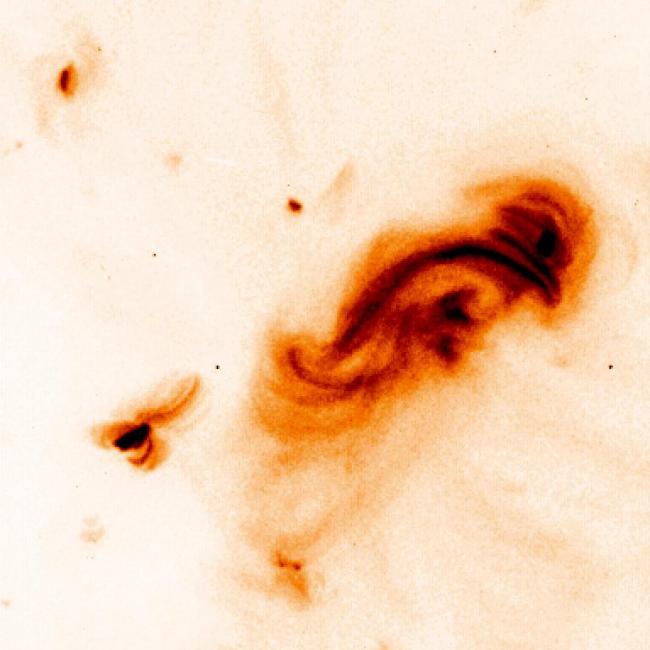
A high resolution image of the solar corona taken with the X-Ray Telescope on the Hinode satellite, and showing a solar sigmoid, a feature linked to solar flaring. New research studied and modeled the complex structure of sigmoids.
The hot outer region of the sun's atmosphere, its corona, is threaded by intense magnetic fields that extend upwards from the surface , often forming loops that are twisted and sheared by the convective stirrings of the dense atmosphere. They act like stretched rubber bands and, when they snap back, these magnetic loops produce flares that emit X-rays and eject energetic charged particles that can cause significant disruption to communications and power grids when they reach they earth.
X-ray observations of the solar corona have discovered the existence of magnetic structures
with S (or inverted S) shapes. These transient, although sometimes long-lived, bright regions are thus called sigmoids, and they are important structures because they seem to be closely related to intense solar activity,
often eruptive flares. The X-Ray Telescope (XRT) on the Hinode satellite has the spatial resolution needed to study sigmoids in detail; XRT was developed and built by the SAO and the Japan Aerospace Exploration Agency. Astronomers recently used the XRT to observe the formation and evolution of a complex sigmoid, and discovered that it consisted of many loops that appear to define two J-shaped structures that together formed its S-shape.
In a new paper, SAO astronomers Antonia Savcheva, Leon Golub, and Ed Deluca, together with two colleagues, successfully modeled the observed behavior of this sigmoid using computer simulations developed by the colleagues. Their results show how the sigmoid could have started from relatively simple structures emerging from the dense atmosphere and evolved into the highly fragmented, twisted sheets and layers that are observed. The authors note that the X-ray emission also becomes more complex in the process, and they speculate that this correlation may be universal. An improved understanding of solar flares is a major goal of current solar research. These new results are an important first step in understanding how sigmoid structures form, develop, and contribute to flaring.